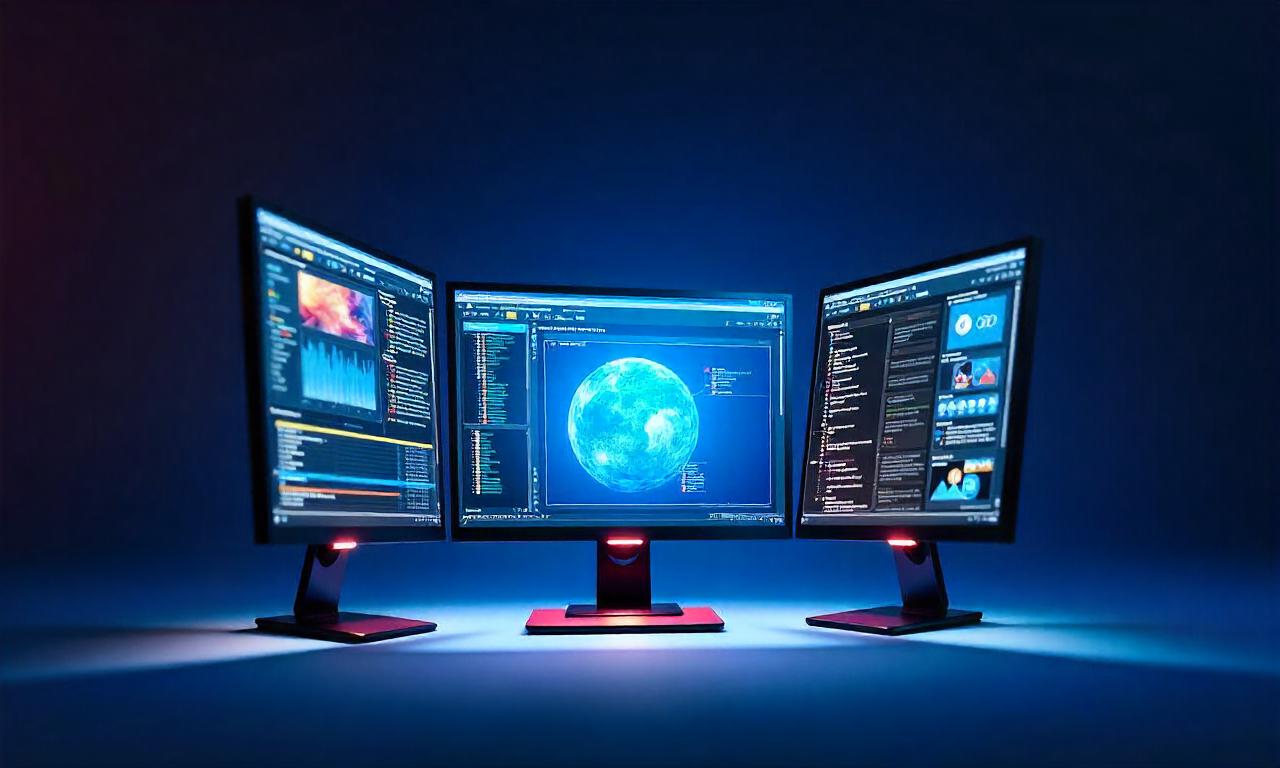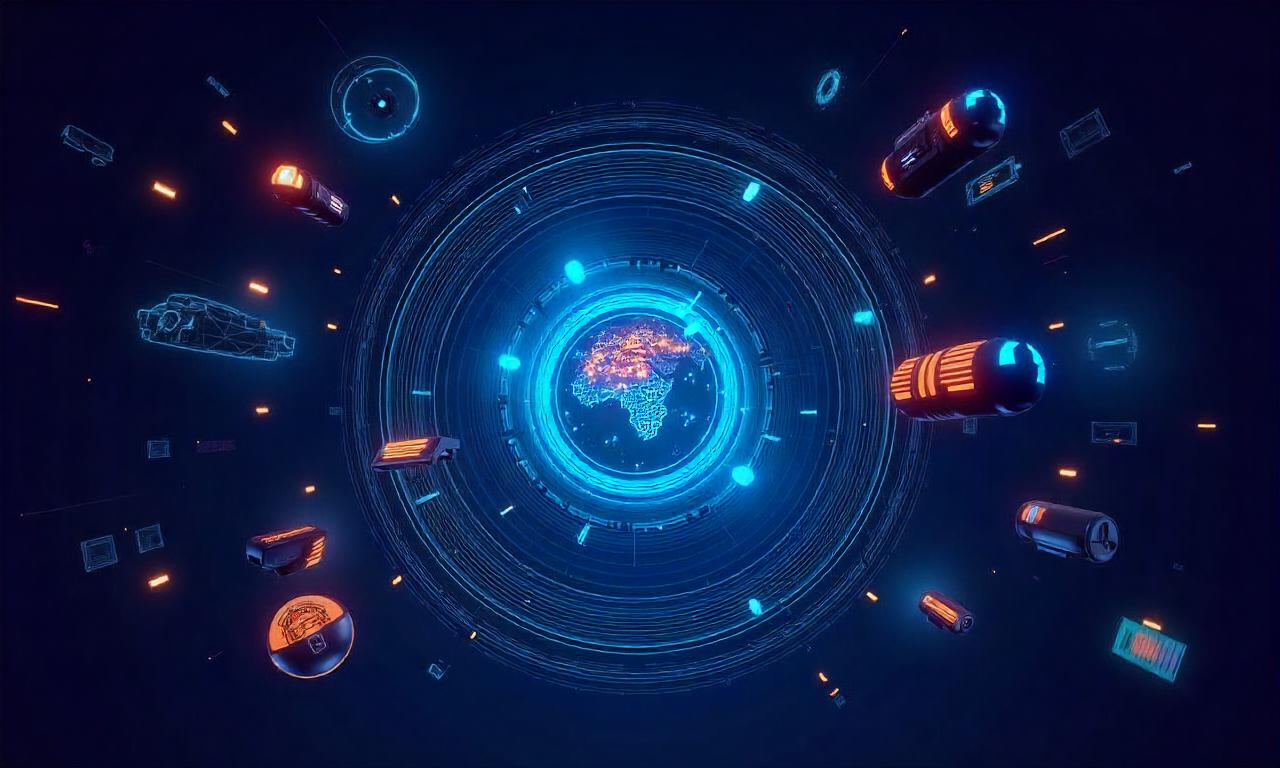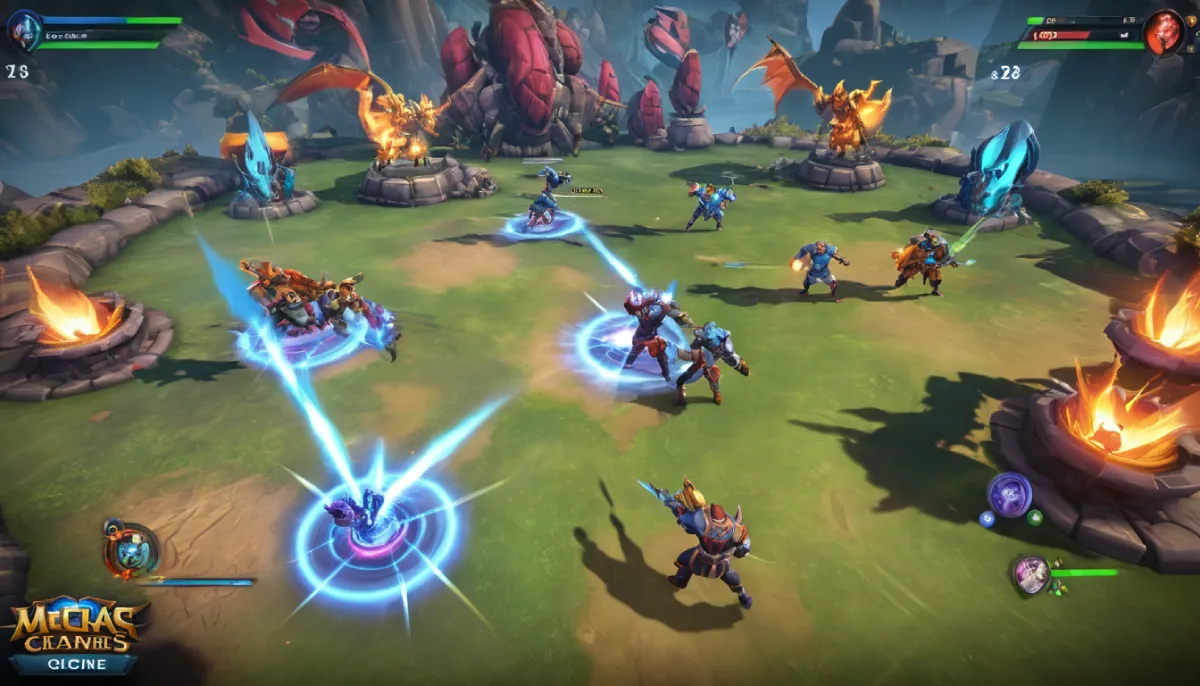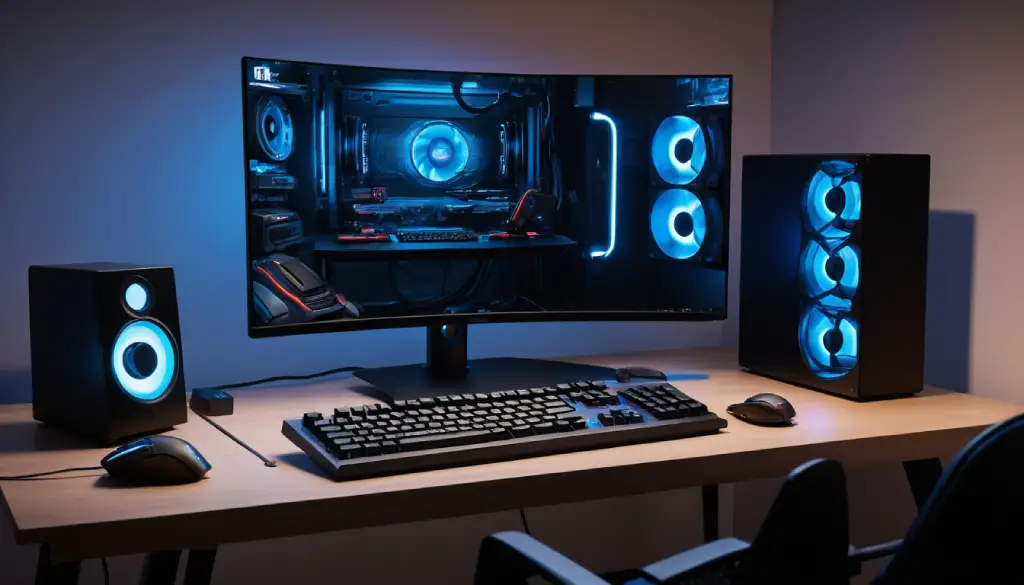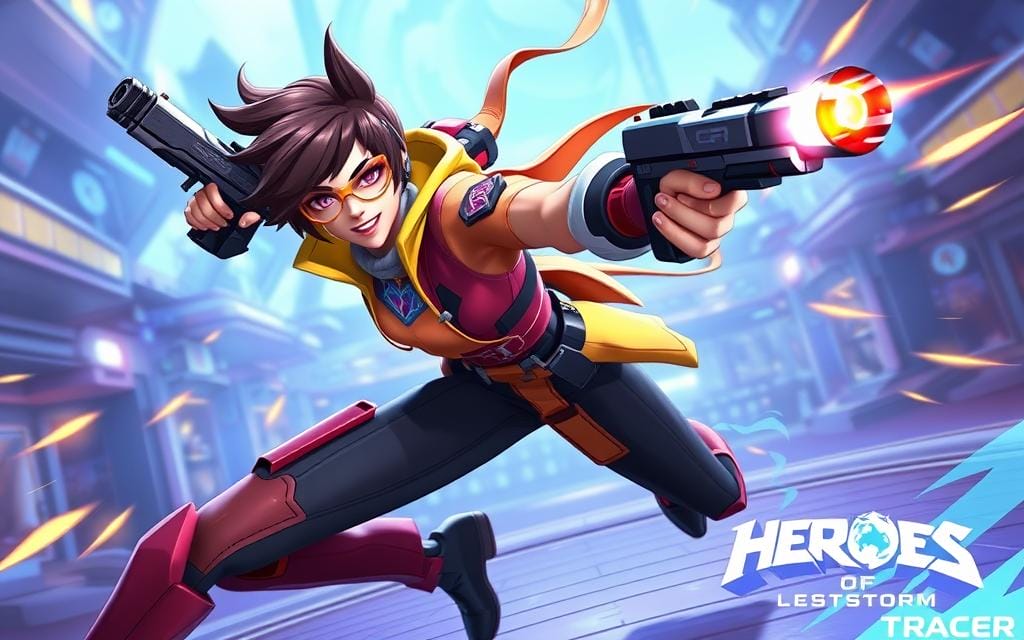Welcome to our quick guide to understanding the roles in Dota 2! In this article, we will explore the different hero roles in the game and discuss the importance of having a solid grasp of them. Understanding the roles in Dota 2 is crucial for effective teamwork and strategic gameplay. Additionally, we will touch upon the position system and how it influences the dynamics of each match.
In Dota 2, each hero has a distinct role to play, whether it’s dealing heavy damage, dominating the middle lane, disrupting the enemy’s carry, supporting the team with utility, or providing vision and survivability. Knowing the strengths and responsibilities of each role will greatly enhance your gameplay and contribute to your team’s success.
Throughout this guide, we will delve into each role in depth, providing insights into hero choices, playstyles, and strategies. Whether you prefer taking on the role of a hard-hitting Carry, dominating the Midlane, surviving and disrupting as an Offlane player, supporting with utility as a Soft Support, or providing essential item support as a Hard Support – we have got you covered!
So, if you are ready to sharpen your skills and elevate your Dota 2 gameplay, let’s dive into the world of hero roles and the position system in Dota 2!

The Carry Role in Dota 2
The carry role in Dota 2 plays a crucial role in determining the outcome of games, particularly in the late stages. A carry is responsible for dealing high amounts of damage and carrying the team to victory. To excel in this role, players must understand their key responsibilities, adopt the appropriate playstyle, and make wise hero choices.
Key Responsibilities:
- Farming: Carry players prioritize farming to accumulate gold and experience, ensuring they have the items and levels necessary to deal substantial damage.
- Dealing Damage: Carries focus on eliminating enemy heroes and structures using their high damage output.
- Objective Taking: Carries are instrumental in taking down Roshan, securing key objectives, and pushing into the enemy base.
Playstyle:
The carry role demands a patient and strategic playstyle. Carries often start the game in a relatively weak state, but as the game progresses, they become increasingly powerful. Carry players must prioritize farming, avoid unnecessary risks, and carefully choose their fights. They should prioritize taking down high-priority targets and protecting themselves from potential threats.
Hero Selection:
Selecting the right hero is essential for a carry player. Heroes with high damage potential, scaling abilities, and the ability to carry the game are typically preferred. Popular carry heroes in Dota 2 include Anti-Mage, Spectre, and Faceless Void. Each hero offers unique strengths and weaknesses that players must consider when making their selection.
Mastering the carry role in Dota 2 requires a deep understanding of the game mechanics, hero synergies, and effective decision-making. By assuming this role, players can become the driving force behind their team’s success in securing victory!
The Midlane Role in Dota 2
In Dota 2, the midlane role is crucial for securing early advantages and dominating the middle lane. Midlaners possess the skills and knowledge to outplay their opponents and exert pressure on the enemy team.
To excel in the midlane, players need a combination of mechanical skill, map awareness, and decision-making ability. They must have a deep understanding of their chosen hero’s strengths and weaknesses, as well as the ability to exploit the enemy’s vulnerabilities.
Hero choices in the midlane are diverse, with options ranging from assassins like Templar Assassin and Queen of Pain to spellcasters like Leshrac and Zeus. Each hero brings unique playstyles and strategies that midlaners can utilize to gain an advantage.
Skills Required to Play Mid in Dota 2
- Lane control: Midlaners must master last hitting and denying creeps to maintain a gold and experience advantage.
- Harassment: Effective midlaners know when and how to harass their opponents, putting them at a disadvantage.
- Gank awareness: Midlaners need to be constantly aware of potential ganks from the enemy team and take steps to avoid or counter them.
- Map control: Midlaners should utilize their hero’s mobility to control key areas of the map, securing vision and contributing to team objectives.
Strategies for Dominating the Midlane
To dominate the midlane, midlaners can employ various strategies:
- Aggressive playstyle: Some midlaners prefer to play aggressively, constantly pressuring their opponent and forcing them to play defensively. This approach aims to secure an early advantage and limit the enemy’s farm.
- Farming-oriented playstyle: On the other hand, some midlaners prioritize farming and accumulating gold and experience. They focus on efficient farming patterns and aim to scale into the late game as a formidable core.
- Rune control: Midlaners should contest and secure the various runes spawning every two minutes, using them to gain temporary advantages or set up kills in other lanes.
- Rotations: Skilled midlaners have the ability to rotate to other lanes, assisting their teammates and tipping the balance in favor of their team.
In conclusion, the midlane role in Dota 2 requires a combination of skill, game knowledge, and strategic thinking. Midlaners possess the potential to dictate the pace of the game and provide a strong foundation for their team’s success. Mastering this role is essential for players who aspire to become proficient in Dota 2.
The Offlane Role in Dota 2
The offlane role in Dota 2 is one of the most challenging and dynamic positions in the game. As an offlaner, your primary objective is to disrupt the enemy carry’s farm while simultaneously surviving in a lane that is often outnumbered.
To excel in the offlane role, you need to possess certain unique characteristics. Firstly, resilience is key. You must be able to endure harassment and constant pressure from the enemy supports while still obtaining experience and gold. Additionally, adaptability is crucial as the offlane requires you to adjust your playstyle depending on the specific match circumstances.
When it comes to hero options, offlaners tend to be versatile and self-sufficient. They possess crowd control abilities and tankiness to disrupt enemy farm and initiate team fights. Heroes like Doom, Tidehunter, and Centaur Warrunner are popular choices in this role.
To be effective in the offlane, you need to employ various tactics. One common strategy is creep cutting, which involves pulling enemy creeps between towers to gain experience while denying the enemy carry’s farm. Another tactic is body blocking the enemy wave to stack it up near your tower, making it safer for you to farm and deny farm from the enemy.
Overall, the offlane role in Dota 2 requires a combination of resilience, adaptability, and strategic thinking. By disrupting the enemy carry’s farm and creating space for your team, you can significantly impact the outcome of the game.
The Soft Support Role in Dota 2
In Dota 2, the soft support role plays a crucial role in assisting the team with utility and crowd control. Soft support players focus on creating opportunities for their team and disrupting the enemy team’s movements. They are the backbone of the team, providing vision, healing, and crucial crowd control abilities.
- Tasks: Soft supports are responsible for warding key areas of the map to provide vision, allowing their team to make informed decisions. They also prioritize buying supportive items such as Couriers, Observer Wards, and Smoke of Deceits. Additionally, they often sacrifice their gold and experience to ensure their cores have a better start.
- Hero Selection: Common hero choices for soft supports include heroes with strong crowd control abilities, such as Lion, Crystal Maiden, or Shadow Shaman. These heroes excel at initiating fights, setting up kills for their teammates, and providing crucial disables to lock down high-value targets.
- Strategies: Soft support players are often seen rotating between lanes to provide assistance, both in setting up kills and protecting their cores from enemy ganks. They excel at coordinating ganks with midlaners and offlaners to secure kills and create early game advantages for their team. Soft supports also play a vital role in team fights by using their crowd control abilities to disrupt the enemy team’s positioning and protect their own team.
Playing the soft support role requires strong game sense, map awareness, and the ability to make quick decisions that benefit the team. Soft supports not only contribute to the overall success of the team but also ensure the safety and sustainability of their carries in the early stages of the game.
The Hard Support Role in Dota 2
In Dota 2, the hard support role is crucial for the success of a team. Hard supports are responsible for providing vision, survivability, and item support to their teammates. They play a selfless role, often sacrificing their own farm and experience to ensure their cores can thrive.
As a hard support, one of your primary tasks is to maintain vision on the map. This involves placing wards in strategic locations to provide crucial information about enemy movements. Vision control is essential for your team to make informed decisions and avoid ganks or ambushes.
Survivability is another key aspect of the hard support role. You’ll often find yourself in dangerous situations, whether it’s during warding missions or team fights. Investing in items like Tranquil Boots, Glimmer Cape, or Force Staff can help you stay alive and continue supporting your team.
Item support is also paramount for a hard support. While you won’t accumulate much gold, you must prioritize purchasing utility items that benefit your team. This can include items like Mekansm, Pipe of Insight, or even Aghanim’s Scepter if the situation calls for it. Every gold coin spent on these items will contribute to the team’s success.
Playing the hard support role comes with unique challenges. It requires exceptional map awareness, decision-making skills, and the ability to predict the enemy’s movements. Efficient stacking and pulling of neutral camps, zoning out enemies to secure your carry’s farm, and timely rotations are all part of the hard support’s responsibilities.
Hero Choices for Hard Supports
- Crystal Maiden: Her powerful crowd control and aura make her a popular pick for hard supports.
- Shadow Shaman: With strong disable abilities and the ability to push down towers, Shadow Shaman is ideal for securing objectives.
- Lich: Lich can deny creeps to control the lane equilibrium and provide a powerful ultimate ability in team fights.
- Warlock: Warlock’s Fatal Bonds and Chaotic Offering can turn team fights in your team’s favor.
These are just a few examples of heroes commonly played in the hard support role. The hero you choose should complement your team composition and address any weaknesses you may have.
As a hard support, you must adapt your playstyle to the needs of your team. Your role is vital in setting up your carries for success and ensuring the team’s overall victory. Embrace the challenges, make selfless decisions, and embrace the support role to become an indispensable asset for your team.
Other Roles in Dota 2
In addition to the core roles in Dota 2, such as the carry, midlane, offlane, soft support, and hard support, there are a couple of other roles that can greatly impact the outcome of a match. These roles are the roamer and the jungler.
The Roamer Role
The roamer in Dota 2 is a dynamic role that focuses on providing support and creating opportunities for the team. Unlike other roles that primarily stay in a specific lane, the roamer moves around the map to secure kills, disrupt the enemy’s farm, and assist teammates in need. This role requires excellent map awareness, decision-making skills, and efficient rotations.
As a roamer, it is crucial to prioritize ganking the enemy’s core heroes, especially in the early game, to limit their farm and delay their power spikes. By constantly moving around the map and keeping the opponents on edge, a roamer can create space for their own team and apply pressure on the enemy team’s resources.
The Jungler Role
The jungler in Dota 2 is responsible for farming neutral creeps in the jungle to gain experience and gold. This role is typically taken by a hero that has the capability to sustain themselves and clear camps efficiently. Junglers can have a significant impact on the game by accumulating resources that would otherwise be inaccessible to their team.
Junglers excel at creating an economy advantage for their team by maximizing the available resources on the map. They can also provide much-needed map control by placing wards and denying the enemy access to jungle camps. However, it’s important for junglers to strike a balance between farming and assisting their team, as neglecting the latter can result in their team losing crucial team fights or objectives.
Conclusion
Understanding and adapting to different roles in Dota 2 is crucial for success in the game. Each role brings a unique set of responsibilities and playstyles that contribute to the overall team strategy. By grasping the intricacies of these roles, players can maximize their effectiveness and contribute significantly to their team’s victory.
The carry role in Dota 2 is responsible for dealing massive damage in the late game. It requires careful farming, itemization, and positioning to carry the team to victory. Midlaners dominate the middle lane, securing a gold and experience advantage to become the team’s playmaker. Offlaners face the challenge of survival while disrupting the enemy carry’s farm, creating space for their team.
Support players play a crucial role in Dota 2. Soft supports provide utility and crowd control to control team fights and protect the carry. Hard supports focus on vision, survivability, and item support to keep the team safe and enable their cores. Additionally, roamer and jungler roles offer unique gameplay experiences, with the former providing ganking opportunities across all lanes, and the latter utilizing the jungle to farm resources and gain an advantage.
By understanding these various roles, players can make informed decisions during the hero selection phase, create effective game plans, and execute strategies successfully. Embracing teamwork and cooperation within a team will enable players to optimize their strengths and cover each other’s weaknesses.
FAQ
What are the different roles in Dota 2?
The different roles in Dota 2 include the carry, midlane, offlane, soft support, hard support, roamer, and jungler.
What is the carry role in Dota 2?
The carry role in Dota 2 is responsible for dealing high amounts of damage in the late game. Carries are typically fragile early on but become unstoppable as the game progresses.
What is the midlane role in Dota 2?
The midlane role in Dota 2 focuses on dominating the middle lane and gaining an advantage for the team. Midlaners often rely on their ability to secure last hits and experience quickly.
What is the offlane role in Dota 2?
The offlane role in Dota 2 involves surviving and disrupting the enemy carry’s farm. Offlaners rely on their ability to hold the lane against multiple enemies and create space for their team.
What is the soft support role in Dota 2?
The soft support role in Dota 2 assists the team with utility and crowd control. Soft supports focus on setting up kills, providing vision, and enabling their carries to farm effectively.
What is the hard support role in Dota 2?
The hard support role in Dota 2 provides vision, survivability, and item support to the team. Hard supports often sacrifice their own farm to ensure their carries have a better chance of winning the game.
What are the roamer and jungler roles in Dota 2?
The roamer role in Dota 2 focuses on moving around the map and creating pressure in multiple lanes. The jungler role involves farming neutral creeps in the jungle to gain gold and experience.



